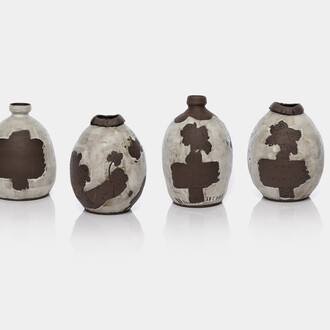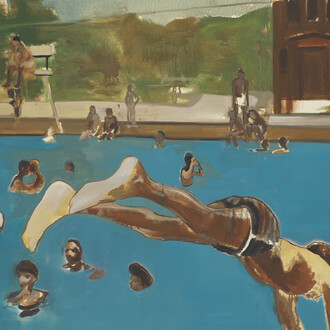Adams and Ollman is pleased to present Subcycle, an exhibition with Antonia Kuo, the artist's first solo show on the West Coast. Kuo investigates key concepts of emptiness and the void with new two- and three-dimensional works that explore the potential of the photographic medium to record and create; to interrogate and conceal; and of industrial processes to act as a metaphor for creation and destruction, autonomy and connection, the individual and the group.
Inherent in all of Kuo's works is an exploration of how to capture light, time and the artistic process in the studio. Working with light-sensitive paper and photochemistry, Kuo creates layers of imagery that are informed by industrial materials, machine parts, trace gestures of her body, and chance. Her unique photochemical paintings celebrate the unknowable or unseeable, while collapsing the concepts of past and present into one phenomenological surface.Central to the exhibition is a new major diptych, Vacuum chamber, made using photography, silkscreen, painting and other alchemical processes. These varied media and actions form a dense landscape of color, shape and pattern, each subsequent layer obliterating an earlier gesture only to reveal a new cosmos or terrain.
The title Subcycle references an industrial term that denotes a smaller part of a larger process, while Vacuum chamber alludes to an environment devoid of air or matter. Both imply systems for creation and recording, or apparatuses used in processes of replication or reproduction. For Kuo, these processes become a stand-in for the female body and for motherhood, itself a site of regeneration, of control, of transformation; the void of the mother, and the dynamics of self and other, of one and two, are reimagined as active sites of great potentiality.
Also on view is Furnace, an industrial assemblage composed of two sides of a mold made into a wall-based relief that resembles sound waves or a meditative object linked to ritual and repetition, both crucial concepts in the work. Other works include cast-off x-ray images. In a process readily associated with the body, machine parts being fabricated in the foundry undergo diagnostic imaging to locate imperfections in their forms which the artist then incorporates into her assemblages. Like the photographic trace, molds leave behind an implied presence in the record of an absent form.
Across these works, Kuo creates a through line between the immeasurable expanse of cosmic time and the intimate brevity of human experience, revealing how ancient traditions and new technologies alike participate in the cyclical patterns that connect all matter and consciousness in an unbroken, ever-evolving continuum.
















